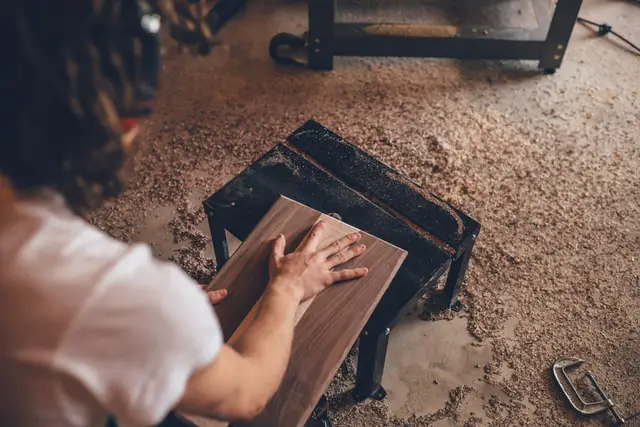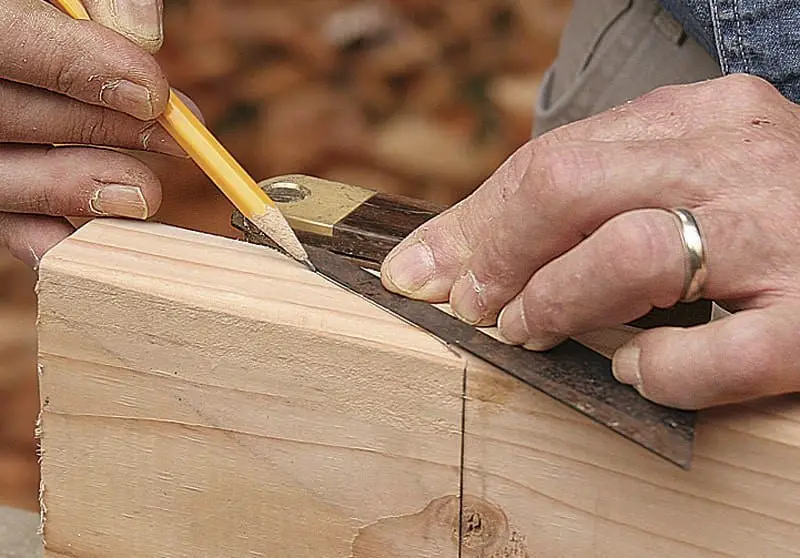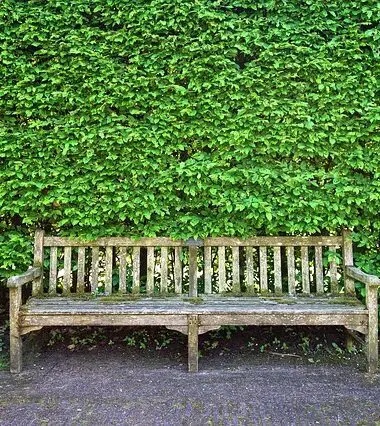A wood planer can quickly make your wooden sheet thinner and smoother. But if you do not have access to a planer, there are some ways you can still achieve that smooth surface. In this article you will learn how to plane wood without a planer. First, you should know what options are available to you.
Alternatives for Planer
If you are wondering how to plane wood without a planer, this article will help you. Though having a planer at hand is convenient, you should not be discouraged from woodwork without it. Here are some options to choose from if you want to plane wood.
- You can use a table saw.
- Bring in a wood router.
- Get a jack plane.
- Deploy a drum-sander or wide-belt.
- Use the sandpaper.
In the next section, you will learn the steps on how to plane wood without a planer.
How to Plane Wood without a Planer – Instructions
The methods mentioned below will help you understand how to plane wood without a planer.
Method 1: With the Help of Table Saw

Table saw is handy in dealing with large sheets and boards.
- Construct a jig. The jig will hold your board in the correct position. Setting this up will take a lot of time. But investing this time is important for a smooth job. Using the saw will be much easier and the results will be much greater.
- The saw blade must sit at 90 degrees (not more, not less). Readjust your blade with the help of an engineering square if it is not in a proper position. Otherwise, you will end up with a flawed and uneven result.
- Remember to move the sheet or board against the blade in a smooth manner. If you are too quick and careless, you can risk burning the wood from too much heat and friction.
- It is always better to have some practice before doing the real thing. Take a scrap wood piece and plane it with the table saw. This will make you more skilled and confident.
Method 2: Get a Jack Plane

This one is an old school option, when using manual planes was still in fashion. A jack plane can be used to flatten wood, but it will take a long time.
- Get a jack plane with a 5 or 6 number plane. The higher the plane number, the longer the base. You will need a number 5 or number 6 plane for a good enough length. Otherwise, the result will be full of imperfections. You may also risk ending up with a surface that looks wavy.
- Begin with the high spots. A straight edge will help you identify those spots.
- As you slowly work the jack plane, use the straight edge to keep a check.
- Make use of winding sticks. Position two of these across the board. Now, when you look across these sticks, you will be able check the evenness of the sheet or board horizontally.
Method 3: Bring in a Wood Router

A wood router is similar to a table saw in the way it planes wood.
- Construct a jig. The jig will hold your board in the correct position. Place the sheet or board properly over the jig.
- The jig must be shoved past the wood router. That way, the router will cut the sheet in its face. Plane in the direction (not against) of the grain, similar to an ordinary wood planer.
- Put more focus on constructing and placing the jig. Once that is done, planning with the help of a router will be a fast and easy task.
- The only problem with using a router is that the result will not be very smooth. You will have to use a sandpaper or similar material for finishing touches.
Method 4: Use the Sandpaper

If you do not have any power tool at your disposal, the classic sandpaper can be of help. Be warned, this will be a labor-intensive and time-consuming method.
- Get a sandpaper (ensure that it is very coarse).
- Wrap the sandpaper around a block of wood (sanding block). This will give you a good grip so you can exert a lot more pressure. You can also purchase sanding blocks made of rubber instead of using wooden blocks.
- With the sanding block, scrub and grate against the wooden surface. Be careful and do not work against the grain.
- You may also opt for an electric sander. If you do, remember not to press down like you would while using an ordinary sandpaper. Doing so will obstruct the sanding plate’s movement.
Method 5: Deploy a Drum-sander and Wide Belt

The drum-sander and wide belt combo works just like a power planer. The only difference is that a power planer uses sharp knives, while drum-sander and wide belts rely on sandpaper. Also, the sander and belt duo are classified as bigger machinery. Although generally used for finishing touches after planing, you can also use this combo for the process of planing itself.
- Place the sandpaper (with heavy grit) in the sander. Now run the board against the sander, in the same manner you would for sanding the board. Be patient as this will be a time-consuming process.
- It is better to place the sheet or board over an already constructed jig. That will keep the sheet in place and make the process faster.
In Conclusion
Now you know how to plane wood without a planer. It is important to take necessary safety precautions. Always put on your safety gear before commencing work. Goggles and gloves are a must. Wood planing creates a lot of saw dust which can enter your eyes and cause damage. In fact, a mask is also advisable to prevent the dust from entering your lungs.
Also, remember to wind up properly and clean your workstation after the job is done. Here is a tip – If you have a garden, you can strategically sprinkle saw dust over the soil to prevent soil erosion and the growth of pesky weeds.








